Home >Backend Development >Python Tutorial >How to use the threading module in python
How to use the threading module in python
- 王林forward
- 2023-05-15 18:16:122239browse
Detailed explanation of the threading module in python. Threading provides a higher-level API than the thread module to provide thread concurrency. These threads run concurrently and share memory.
Let’s look at the specific usage of the threading module:
1. Use of Thread
The target function can instantiate a Thread object, and each Thread object represents a thread. You can start running through the start() method.
Here is a comparison between using multi-threaded concurrency and not using multi-threaded concurrency:
The first is the operation without using multi-threading:
The code is as follows:
#!/usr/bin/python
#compare for multi threads
import time
def worker():
print"worker"
time.sleep(1)
return
if__name__ =="__main__":
for i in xrange(5):
worker()The execution results are as follows:
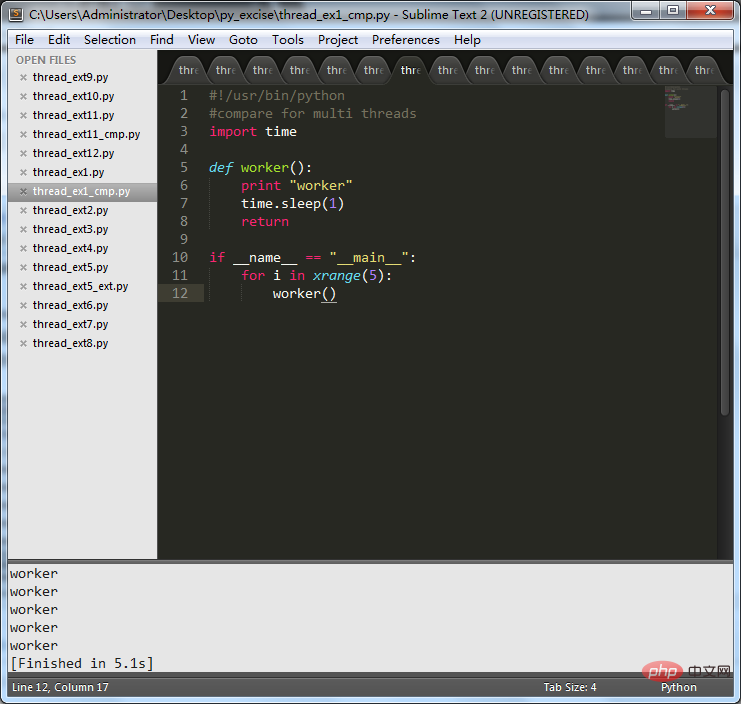
The following is the operation using multi-thread concurrency:
The code is as follows:
#!/usr/bin/python
import threading
import time
defworker():
print"worker"
time.sleep(1)
return
fori in xrange(5):
t=threading.Thread(target=worker)
t.start()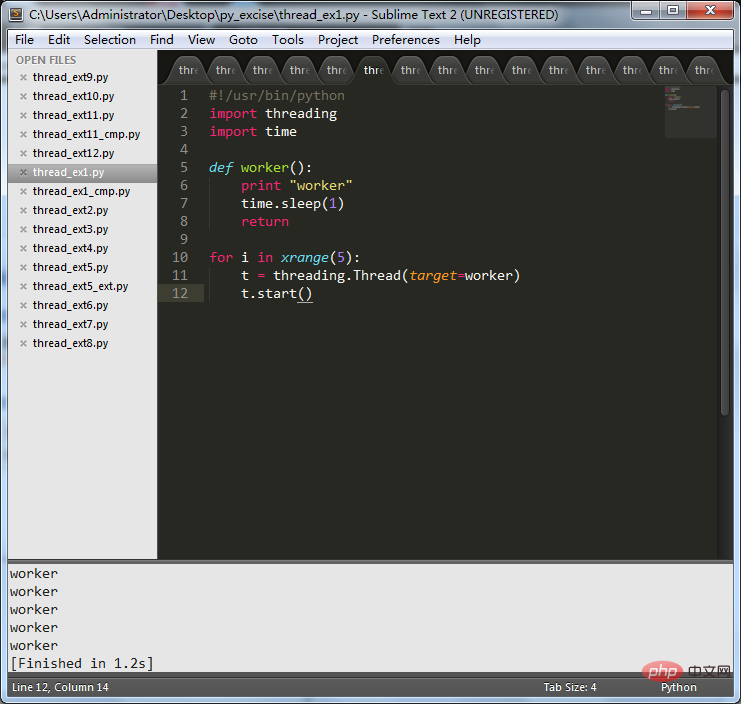
It can be clearly seen that the multi-threaded concurrent operation takes much less time.
2. Use of threading.activeCount()
This method returns the number of threads in the current process. The number returned includes the main thread.
The code is as follows:
#!/usr/bin/python
#current's number of threads
import threading
import time
defworker():
print"test"
time.sleep(1)
for i in xrange(5):
t=threading.Thread(target=worker)
t.start()
print"current has %d threads" % (threading.activeCount() -1)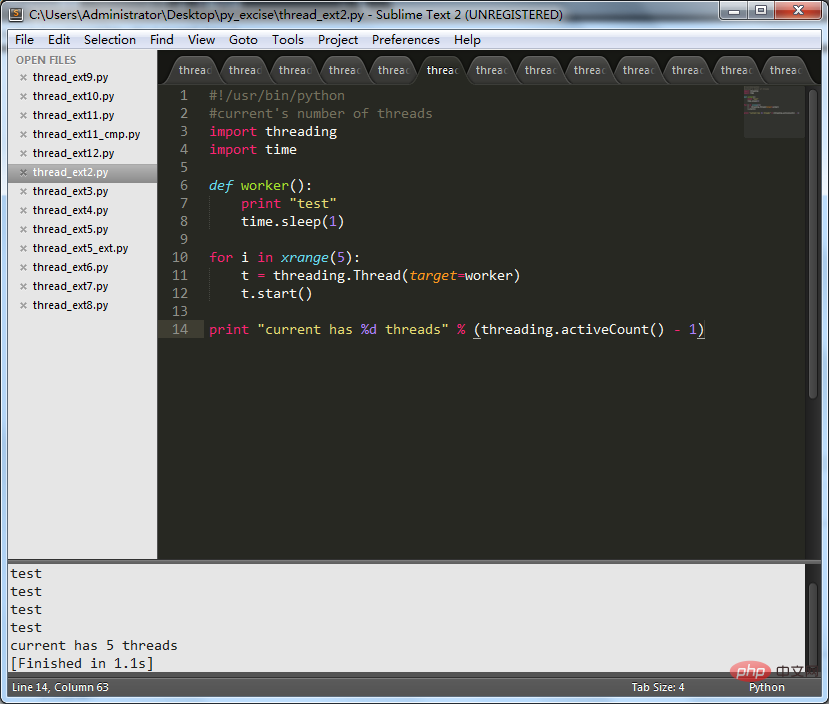
3. Use of threading.enumerate().
This method returns the list of Thread objects currently running.
The code is as follows:
#!/usr/bin/python
#test the variable threading.enumerate()
import threading
import time
defworker():
print"test"
time.sleep(2)
threads=[]
for i in xrange(5):
t=threading.Thread(target=worker)
threads.append(t)
t.start()
for item in threading.enumerate():
print item
print for item in threads:
print item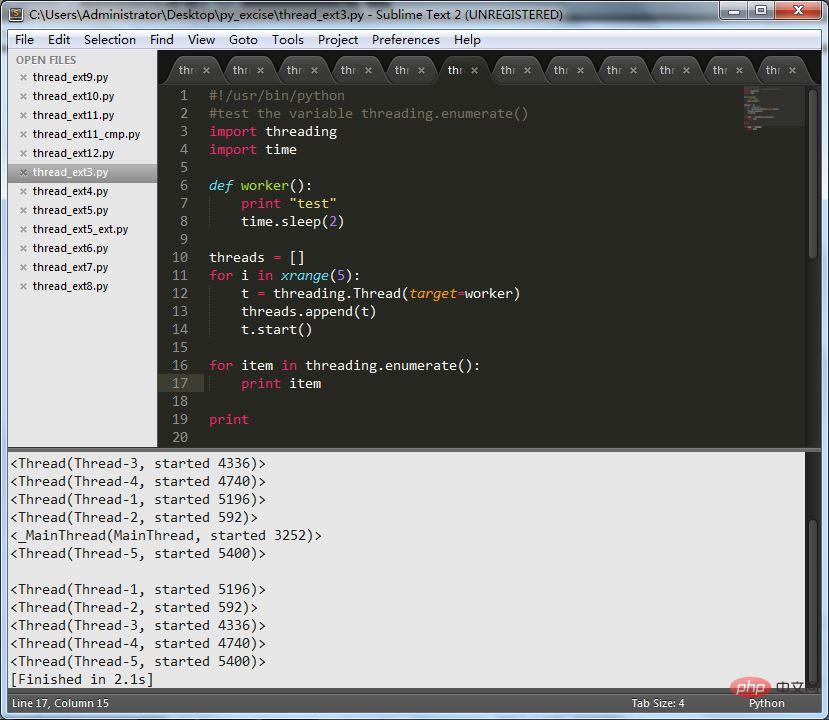
4. Use of threading.setDaemon().
Set the background process.
The code is as follows:
#!/usr/bin/python
#create a daemon
import threading
import time
def worker():
time.sleep(3)
print"worker"
t=threading.Thread(target=worker)
t.setDaemon(True)
t.start()
print"haha"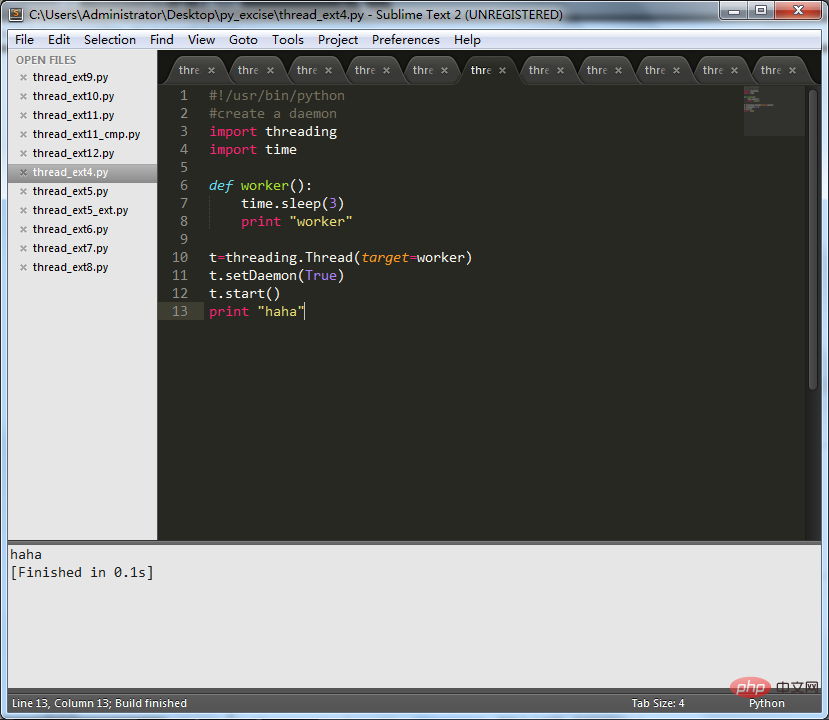
It can be seen that the printing operation in the worker() method is not displayed, indicating that it has become a background process.
The above is the detailed content of How to use the threading module in python. For more information, please follow other related articles on the PHP Chinese website!

